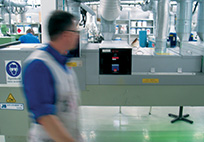Environment
 VOC = Volatile Organic Compounds
VOC = Volatile Organic Compounds
VOC can be defined as organic compounds with a boiling point between 50°C and 260°C or a vapour pressure more than 0.1mm Hg 25 C. The term encompasses a very large and diverse group of carbon-containing compounds, including aliphatic, aromatic and halogenated hydrocarbons; aldehydes; ethers; esters; acids; alcohols and ketones.
Examples of VOCs include benzene, toluene, chlorofluorocarbons (CFCs), halons, formaldehyde, carbon tetrachloride and some pesticides. Benzene is a Group 1 carcinogen (IARC), as is formaldehyde. VOCs are found in many products including paints, adhesives, building board and composite timber, fabric dressing, lacquers, some foams, some carpets and vinyl/plasticised PVC.
VOC Standards: Paints
Several Australian organisations have standards for paints including the Australian Ecolabelling Association (GECA) and the Australian Paint Approval Scheme (APAS D181).
GECA Standards for Paint VOCs are as follows (in grams per Litre g/L):
| |
AV |
Max |
| Exterior Gloss |
75 |
75 |
| Interior Flat Ceiling |
14 |
14 |
| Interior Gloss |
75 |
75 |
| Interior Flat Washable |
16 |
16 |
APAS Standards for Paint VOCs are as follows (in grams per Litre g/L):
| |
AV |
Max |
| Exterior gloss |
75 |
100 |
| Low odour/low environmental impact |
5 |
5 |
(these levels are inclusive of maximum tint levels for tinted paints.)
Visit our downloads section to access VOC Technical Data Sheets & VOC Certificates for LOW VOC products
Low VOC Product Range
| Clear – Single Pack |
Clear – Two Pack |
Pigmented (white & colours) – Single Pack |
Pigmented (white & colours) – Two Pack |
EM1503
EM1167 |
EL4230
EM4530 |
ED1225
EG1351 |
EF4502
EH4120 |
Visit our downloads section to access VOC Technical Data Sheets & VOC Certificates for LOW VOC products.